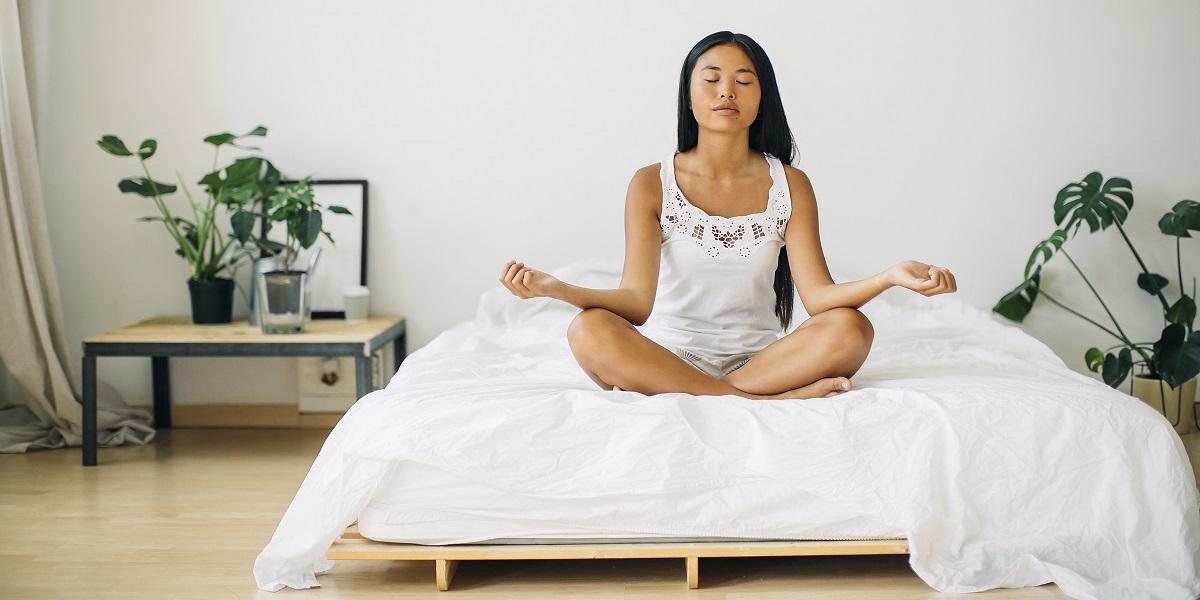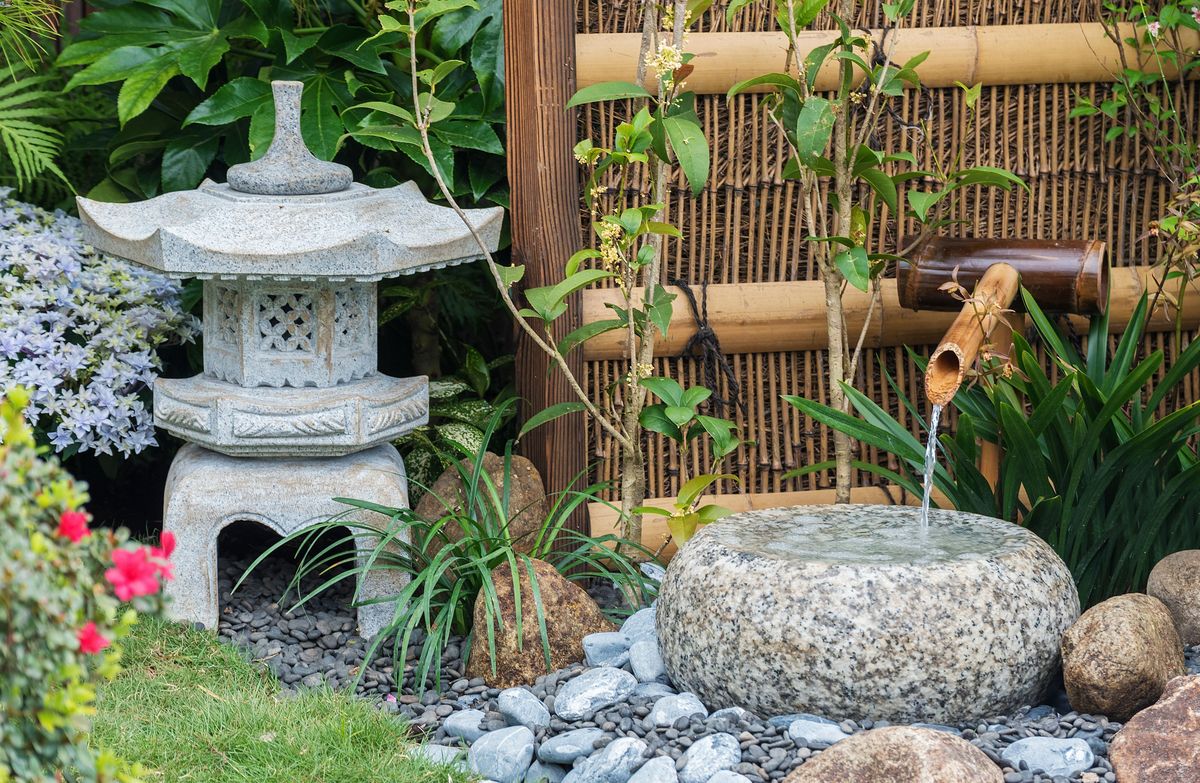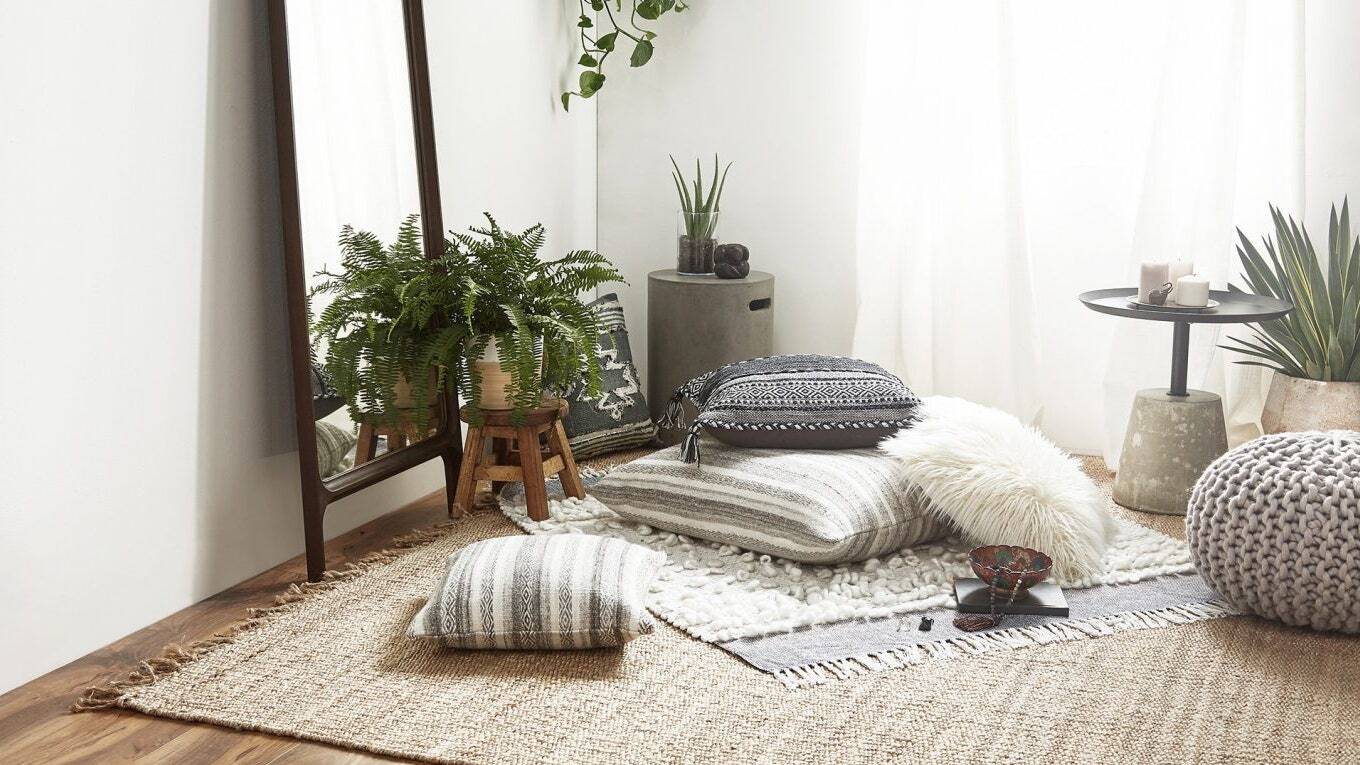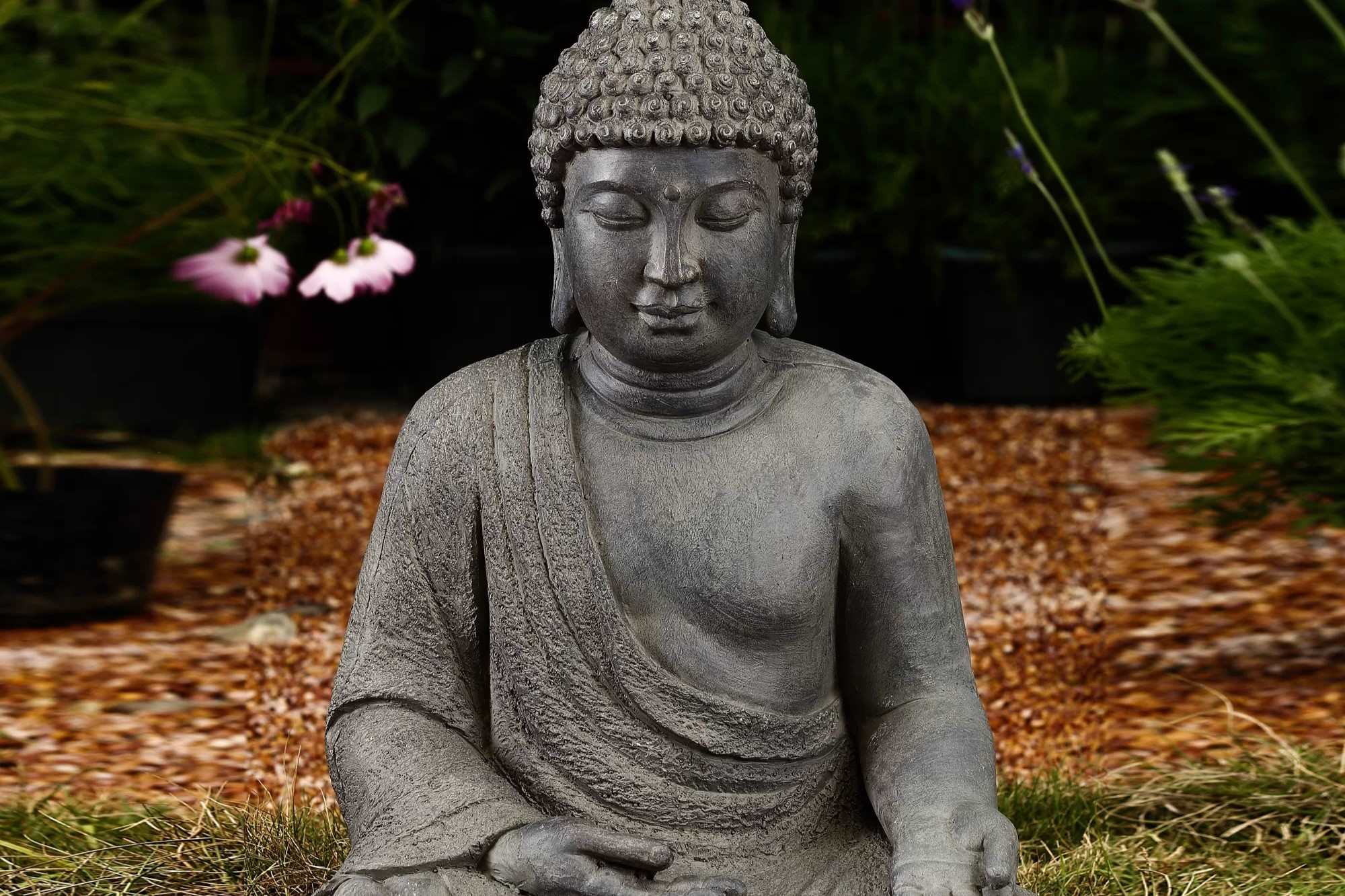Home>Furniture>Bedroom Furniture>How To Meditate In Bed


Bedroom Furniture
How To Meditate In Bed
Modified: October 20, 2024
Discover the ultimate guide on how to incorporate meditation into your daily routine with our practical tips and techniques, specifically designed for practicing meditation in the comfort of your own bedroom. Enhance your relaxation and mindfulness with our bedroom furniture.
(Many of the links in this article redirect to a specific reviewed product. Your purchase of these products through affiliate links helps to generate commission for Storables.com, at no extra cost. Learn more)
Introduction
Bedrooms are often regarded as a sanctuary, a place of rest and relaxation. It’s the space where we start and end our day, where we retreat from the hustle and bustle of the outside world. What if I told you that your bedroom can also serve as a tranquil setting for meditation? That’s right, you can harness the power of meditation right from the comfort of your own bed.
Meditating in bed offers a myriad of benefits, allowing you to cultivate inner peace and find a sense of calm before drifting off to sleep or starting your day afresh. It’s a practice that can help you alleviate stress, improve focus, and enhance overall well-being. In this article, we will explore the various techniques and strategies for meditating in bed, so you can create a serene space and make the most out of your meditation practice.
Whether you’re a seasoned meditator or just starting out, the convenience and comfort of meditating in bed make it an attractive option. You can easily incorporate meditation into your bedtime routine or make it part of your wake-up ritual. So, prepare yourself for a journey towards tranquility as we dive into the art of meditating in bed.
Key Takeaways:
- Meditating in bed promotes relaxation, improves sleep quality, reduces stress, and enhances focus, making it an accessible and beneficial practice for overall well-being.
- Creating a tranquil space, finding a comfortable position, and utilizing breathing techniques and guided meditation can enhance the experience of meditating in bed, providing a sanctuary for inner peace and self-care.
Read more: How To Meditate With Candles
Benefits of Meditating in Bed
Meditating in bed offers a range of benefits that can enhance both your physical and mental well-being. Let’s take a closer look at some of the advantages:
- Promotes relaxation: The familiar and comfortable setting of your bed helps create a sense of relaxation and ease. When you’re already in a calm and peaceful environment, it becomes easier to let go of stress and tension.
- Improves sleep quality: Meditating in bed before sleep can improve the quality of your sleep. It helps slow down your racing thoughts and release accumulated tension, enabling you to fall asleep faster and experience a more restful sleep.
- Reduces stress and anxiety: Bedtime meditation is an effective way to alleviate stress and anxiety. It helps calm the mind, relax the body, and encourages the release of tension, promoting a sense of overall well-being.
- Enhances focus and clarity: Regular meditation practice can sharpen your focus and increase mental clarity. When you start your day with a clear mind, you can approach tasks with greater efficiency and productivity.
- Boosts mood and positivity: Meditating in bed can have a positive impact on your mood. By focusing on your breath and releasing negative thoughts, you can cultivate a more positive and optimistic mindset.
- Relieves physical discomfort: If you face physical discomfort, such as muscle tension or chronic pain, meditating in bed can provide relief. By bringing your awareness to your body and practicing relaxation techniques, you can alleviate physical discomfort and promote healing.
- Promotes self-care: Carving out time for meditation in bed is a form of self-care, which is essential for maintaining a healthy and balanced lifestyle. It allows you to prioritize your well-being and nourish your mind, body, and soul.
With these benefits in mind, it’s clear that meditating in bed can be a valuable addition to your daily routine. So, let’s explore how to prepare your space and set the mood for a soothing meditation experience.
Preparing Your Space
Creating a tranquil and inviting space is crucial when it comes to meditating in bed. Here are some steps you can take to prepare your space:
- Declutter: Start by decluttering your bedroom. A clutter-free environment helps promote a sense of calm and relaxation. Clear any unnecessary items from your bedside table and create a clean and organized space.
- Dim the lights: Soft, dim lighting can help create a peaceful atmosphere. Consider using a bedside lamp with a warm and gentle glow. You can also use candles or string lights to add a touch of coziness to the space.
- Remove distractions: Minimize distractions as much as possible. Put your phone on silent or keep it in another room during meditation. If you have a television in your bedroom, cover it or move it temporarily to reduce visual distractions.
- Add soothing elements: Incorporate elements that soothe your senses. This could include scented candles, essential oils, or a small indoor fountain. Experiment with different aromas and textures to find what resonates best with you.
- Choose comfortable bedding: Opt for comfortable and cozy bedding that enhances your relaxation. Soft pillows, fluffy blankets, and high-quality sheets can contribute to a more peaceful and enjoyable meditation experience.
By following these steps, you can create a serene and inviting space that sets the stage for a blissful meditation practice. Now, let’s move on to finding a comfortable position for meditation.
Finding a Comfortable Position
When it comes to meditating in bed, finding a comfortable position is essential for a successful practice. Here are a few options to consider:
- Seated position: Sit cross-legged on your bed with your back straight. You can use cushions or pillows to support your hips and back if needed. Rest your hands on your thighs or place them in a comfortable position that feels natural to you.
- Lying down: If you prefer a more relaxed position, you can lie down on your back with your legs extended and your arms resting by your sides. Ensure that your body is fully supported by the mattress and use pillows under your knees or behind your head for added comfort.
- Reclining position: Another option is to use a reclining chair or an adjustable bed frame that allows you to find the perfect angle for relaxation. This position can be beneficial for individuals with back or joint issues, as it provides additional support.
- Experiment and adapt: Everyone’s body is different, so don’t be afraid to experiment with different positions and make adjustments based on your comfort. You may find that a combination of sitting and lying down works best for you.
Remember, the goal is to find a position that allows you to relax and stay still for an extended period. It’s important to listen to your body and make any necessary modifications to ensure that you can maintain the position without discomfort or strain.
Once you’ve found a comfortable position, it’s time to set the mood and create an atmosphere conducive to deep relaxation. Let’s explore how to do that next.
Setting the Mood
Creating the right ambiance is essential for a soothing and immersive meditation experience in bed. Here are some tips to set the mood:
- Ambient lighting: Adjust the lighting in your bedroom to create a calm and serene environment. Turn off bright overhead lights and opt for softer, more soothing lighting options such as bedside lamps or candles. Dimming the lights helps promote relaxation and allows you to focus inward.
- Aromatherapy: Infuse your space with relaxing scents using essential oils or scented candles. Different scents have varying effects, so choose ones that promote relaxation, such as lavender, chamomile, or sandalwood. Place a few drops of essential oil on a diffuser or pillow, or use a room spray to create a tranquil atmosphere.
- Soothing sounds: Consider playing soft, calming music or nature sounds to enhance the meditative experience. Look for instrumental or ambient tracks that help create a serene atmosphere. Alternatively, you can use white noise machines or meditation apps that offer a range of soothing sound options.
- Comfortable temperature: Ensure that the temperature in your bedroom is set at a comfortable level. You don’t want to be too cold or too hot, as extreme temperatures can disrupt the meditation experience. Find the ideal temperature that allows you to relax and settle into your meditation practice.
- Visual cues: Surround yourself with visual cues that promote relaxation and tranquility. This could include placing potted plants, calming artwork, or personal objects that hold positive associations for you within your view. These visual elements can help create a serene and peaceful atmosphere.
Remember, the purpose of setting the mood is to create a conducive environment for deep relaxation and introspection. Experiment with different elements to find what works best for you and enhances your meditation experience. Now, let’s explore breathing techniques that are particularly beneficial for meditation in bed.
Find a comfortable position, close your eyes, and focus on your breath. Let go of any racing thoughts and bring your attention back to your breath whenever your mind wanders.
Breathing Techniques for Bedtime Meditation
Proper breathing techniques are an integral part of meditation, helping to calm the mind and relax the body. Here are a few breathing exercises that are particularly beneficial for bedtime meditation:
- Deep belly breathing: Start by taking slow, deep breaths. Inhale deeply through your nose, allowing your belly to expand as you fill your lungs with air. Exhale slowly through your mouth, releasing any tension or stress with each breath. Focus on the sensation of your breath moving in and out of your body, allowing it to anchor your attention and bring you into the present moment.
- Counting breaths: Another technique is to count your breaths to help maintain focus and relaxation. Inhale deeply and then exhale, counting “one.” Inhale again, and on the next exhale, count “two.” Continue this pattern, counting up to five and then starting again from one. If you lose count or get distracted, simply return to one and begin again.
- 4-7-8 technique: This technique, popularized by Dr. Andrew Weil, involves inhaling for a count of four, holding the breath for a count of seven, and exhaling for a count of eight. It can help relax the nervous system and induce a state of calm. Repeat this cycle several times, allowing the rhythm of your breath to guide you into a deeper state of relaxation.
- Alternate nostril breathing: This technique is excellent for balancing and calming the mind. Close your right nostril with your right thumb and inhale deeply through your left nostril. Close your left nostril with your ring finger, release your right nostril, and exhale through the right nostril. Inhale through the right nostril, close it with your thumb, release your left nostril, and exhale through the left nostril. Repeat this cycle for several rounds, focusing on the sensation of the breath moving through each nostril.
These breathing techniques can help slow down your heart rate, relax your body, and quiet your mind as you prepare for sleep. Experiment with each technique and find the one that resonates best with you. Now, let’s explore the practice of mindfulness meditation in bed.
Mindfulness Meditation in Bed
Mindfulness meditation is a practice that involves bringing your full attention to the present moment without judgment. It can be particularly powerful when practiced in bed, as it allows you to cultivate a sense of deep relaxation and awareness. Here’s how to practice mindfulness meditation in bed:
- Find a comfortable position: Choose a seated or lying down position that allows you to be relaxed and alert. Close your eyes or keep them gently focused on a fixed point in front of you.
- Bring your attention to your breath: Notice the sensation of your breath as it enters and leaves your body. Feel the rise and fall of your chest or the sensation of air passing through your nostrils. Allow your breath to be your anchor, bringing you back to the present moment whenever your mind starts to wander.
- Observe your thoughts and emotions: As you practice mindfulness, thoughts, emotions, and sensations will arise. Instead of getting caught up in them, simply observe them without judgment or attachment. Notice their presence and let them pass by, returning your attention to your breath.
- Expand your awareness: After a few minutes of focusing on your breath, expand your awareness to include the sensations in your body. Notice any areas of tension or discomfort and consciously release them with each exhale. Allow your attention to scan your body from head to toe, relaxing any areas of tightness.
- Cultivate gratitude and compassion: As you continue your mindfulness practice, shift your focus to cultivating feelings of gratitude and compassion. Reflect on the things you are grateful for in your life and send feelings of love and kindness to yourself and others.
Remember, the goal of mindfulness meditation is not to stop your thoughts, but to observe them with a non-judgmental and accepting attitude. It is through this practice of presence and awareness that you can cultivate a greater sense of calm and clarity. Now, let’s explore the use of guided meditation for sleep.
Guided Meditation for Sleep
Guided meditation is a powerful tool to help you relax, unwind, and prepare your mind and body for a restful night’s sleep. It involves following along with a recorded voice or video that guides you through various relaxation techniques and visualizations. Here’s how to practice guided meditation for sleep:
- Find a comfortable position in bed: Choose a position that allows you to relax and be fully supported. You can lie down on your back or find a position that feels most comfortable to you.
- Find a guided meditation: Search for guided meditation recordings or apps specifically designed for sleep. Look for ones that focus on relaxation, deep breathing, and letting go of tension.
- Follow along with the guidance: Play the guided meditation and listen to the instructions. Pay close attention to the voice guiding you through relaxation techniques, body scans, and visualizations.
- Focus on your breath and bodily sensations: As you listen to the guided meditation, bring your attention to your breath and the sensations in your body. Allow yourself to fully experience and release any tension or discomfort.
- Visualize calm surroundings: Many guided meditations for sleep involve visualizations. Imagine yourself in a serene and peaceful place, such as a tranquil beach or a peaceful garden. Engage your senses and immerse yourself in the soothing imagery.
- Let go of control: As you follow the guided meditation, let go of any need to control or analyze. Simply surrender to the process and trust that it will guide you towards a state of deep relaxation and sleep.
Guided meditation can be a helpful tool for those who struggle with relaxation or have busy minds that resist stillness. It provides a structured framework and external guidance to help you ease into a peaceful state of mind. Now, let’s explore some tips for those who are new to meditating in bed.
Tips for Beginners
If you’re new to meditating in bed, here are some tips to help you get started and make the most out of your practice:
- Start with short sessions: As a beginner, it’s best to start with shorter meditation sessions, around 5 to 10 minutes, and gradually increase the duration as you become more comfortable and familiar with the practice.
- Be consistent: Consistency is key when it comes to meditation. Try to establish a regular meditation routine, aiming for daily practice. Finding a specific time in the morning or evening that works best for you can help create a habit.
- Set realistic expectations: Understand that meditation is a practice, and it takes time and patience to reap the full benefits. Don’t expect immediate results and be gentle with yourself as you navigate the process.
- Focus on your breath: Your breath is an anchor in meditation, helping you stay present and centered. Whenever your mind starts to wander, gently bring your attention back to your breath and the present moment.
- Be kind to yourself: Meditation is a non-judgmental practice, so avoid getting frustrated or beating yourself up if you find it challenging. Treat yourself with kindness, acceptance, and compassion as you explore this journey of self-discovery.
- Explore different techniques: There are various meditation techniques available, such as mindfulness, loving-kindness, or body scan meditations. Experiment with different approaches to find what resonates best with you and brings you the most peace and relaxation.
- Seek guidance if needed: If you’re unsure of how to start or have questions about meditation, consider seeking guidance from a meditation teacher or using meditation apps that offer beginner-friendly guided meditations.
- Be patient with sleepiness: It’s common to feel sleepy during meditation, especially when practicing in bed. If you find yourself nodding off, try sitting up or finding a balance between relaxation and alertness to stay awake and attentive.
- Give yourself permission to rest: Remember that meditation in bed can also be a time for deep relaxation and rest. If sleep comes naturally during your practice, allow yourself to fully embrace it as a form of self-care.
By incorporating these tips into your meditation practice, you can create a nurturing and fulfilling experience in bed. Now, let’s conclude our exploration of meditating in bed.
Read more: Creating A Cozy Outdoor Meditation Space
Conclusion
Meditating in bed offers a wonderful opportunity to cultivate inner peace, relaxation, and a sense of well-being. Whether you’re starting or ending your day with meditation, your bedroom can become a sanctuary for finding solace and reconnecting with yourself.
We explored the numerous benefits of meditating in bed, including promoting relaxation, improving sleep quality, reducing stress and anxiety, enhancing focus, boosting mood, relieving physical discomfort, and promoting self-care. These advantages make meditating in bed an appealing and accessible practice for individuals of all experience levels.
Preparing your space by decluttering, adjusting lighting, and removing distractions helps create a tranquil environment. Finding a comfortable position, whether seated or lying down, allows you to relax and focus on your practice. Setting the mood through ambient lighting, aromatherapy, soothing sounds, and visual cues helps create an atmosphere conducive to meditation.
Breathing techniques, such as deep belly breathing, counting breaths, 4-7-8 technique, and alternate nostril breathing, can promote relaxation and calm the mind. Mindfulness meditation in bed encourages present-moment awareness and the observation of thoughts and emotions without judgment. Guided meditation for sleep provides external guidance and visualizations to induce deep relaxation and prepare the mind and body for a peaceful slumber.
For beginners, it is important to start with short and consistent sessions, focusing on the breath while maintaining realistic expectations. Exploring different meditation techniques and seeking guidance when needed can enhance your practice. Remember to be kind to yourself and patient with any sleepiness that may arise during meditation.
Incorporating meditation into your bedtime routine or wake-up ritual in bed can transform your experience by bringing a sense of calm and mindfulness into your daily life. So, embrace the tranquility and embark on your journey of meditating in bed to cultivate inner peace, well-being, and a deeper connection with yourself.
Frequently Asked Questions about How To Meditate In Bed
Was this page helpful?
At Storables.com, we guarantee accurate and reliable information. Our content, validated by Expert Board Contributors, is crafted following stringent Editorial Policies. We're committed to providing you with well-researched, expert-backed insights for all your informational needs.













